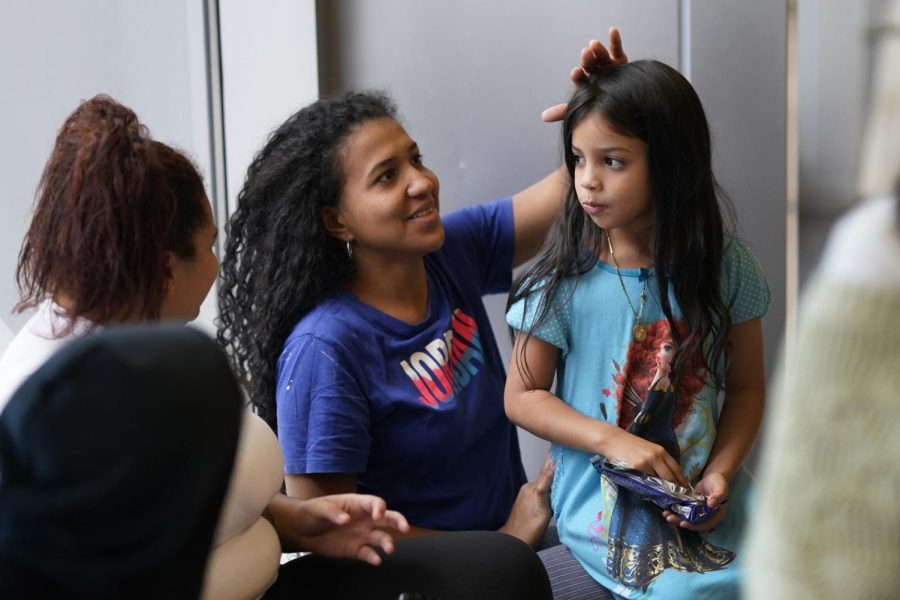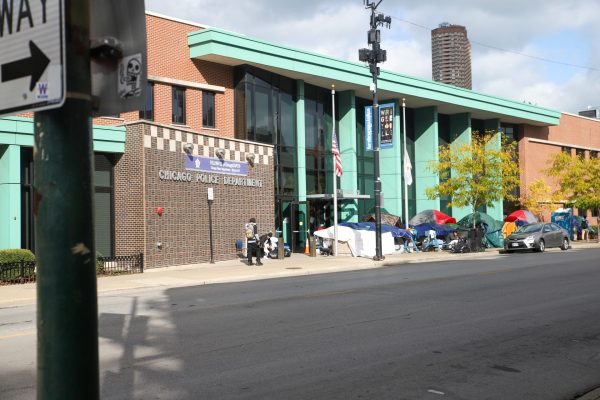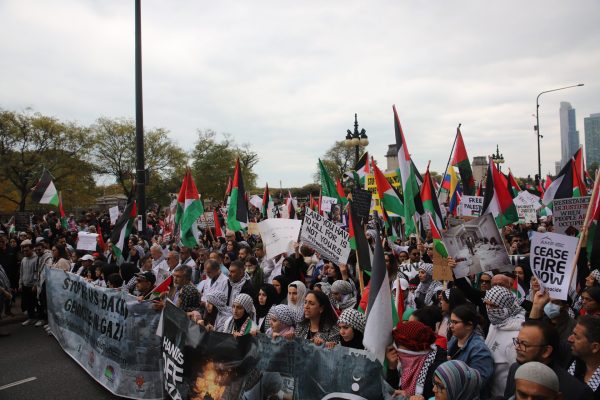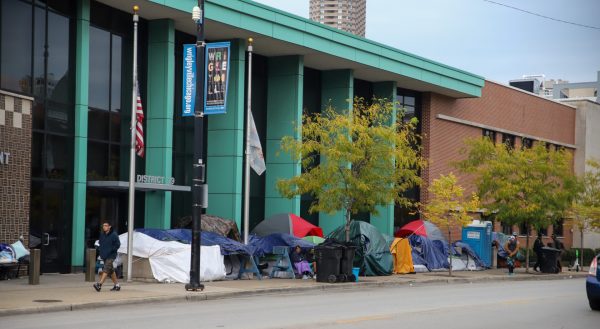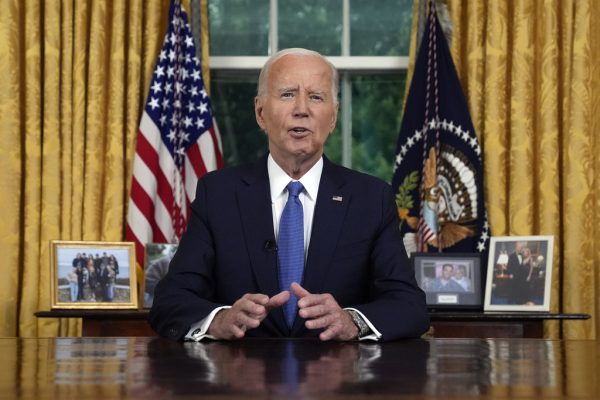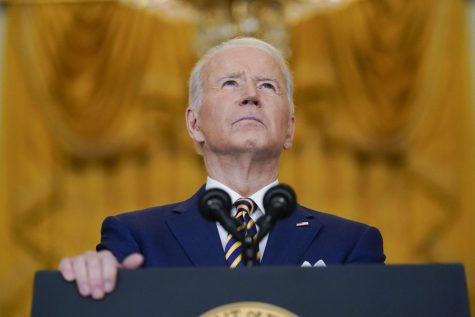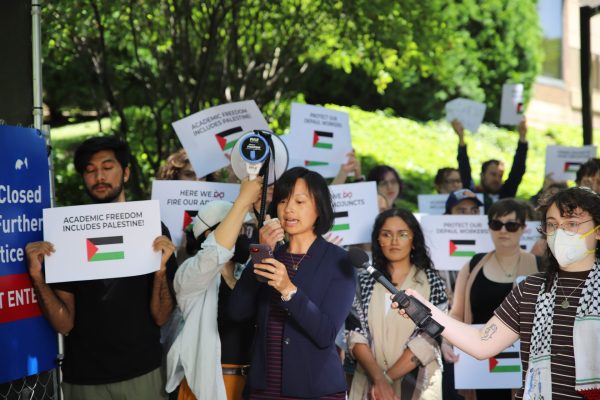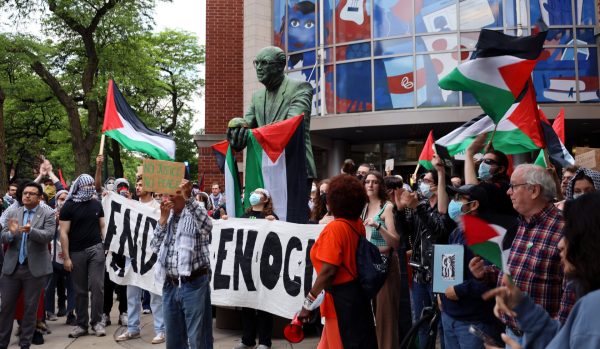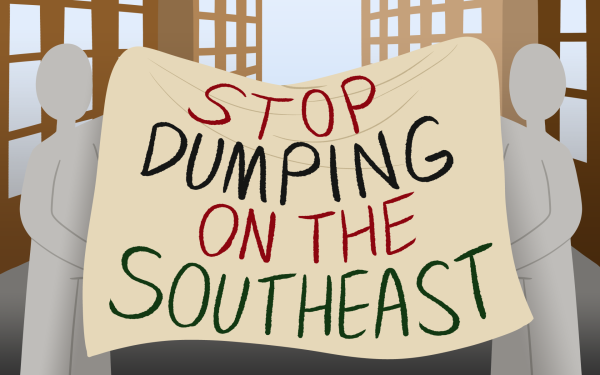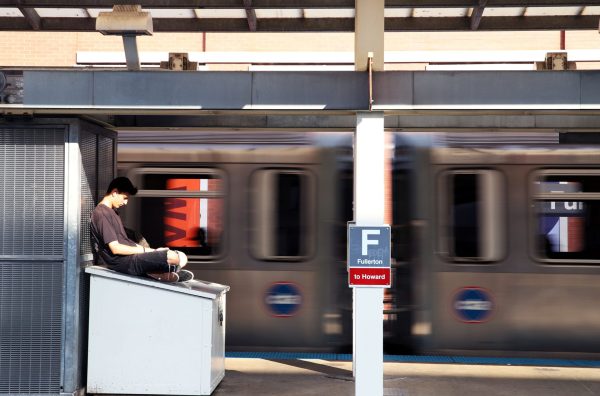Impending end of Title 42 looms over city officials and community organizers amid influx of asylum seekers
Charles Rex Arbogast/courtesy of AP
(Center) Karen Malave, an immigrant from Venezuela, smiles as she fixes her daughter Avril Brandelli’s hair. They and other families are taking shelter in a Chicago Police Department station.
Another influx of migrants arrived in Chicago at the beginning of May, leaving many waiting for shelter in police stations. But as city officials and community organizers grapple with the lack of resources, they fear the impending end of Title 42 this month, which would cause more strain on a city that is already struggling to craft a cohesive plan to provide asylum seekers with housing and proper health care.
Title 42 is a public health policy that was created by former president Donald Trump in March 2020 and it allows immigration authorities to deny hundreds of thousands of people a chance to apply for asylum while citing Covid-19 concerns.
The policy is set to end May 11, which would broaden the number of asylum seekers allowed through the border. Leaders argue that the lift will make it harder for city officials to provide resources quickly enough to match the swift pace of incoming migrants.
Several Democratic-led cities including Washington, D.C., New York City and others have faced a surge in migrants, many arriving to the cities by bus or plane directly from the border towns.
Chicago received more than 8,000 migrants since late August 2022 after Texas republican Gov. Greg Abbott criticized federal immigration policies and funded a program to send migrants to sanctuary cities, saying that cities with Democratic leaders should be the ones to grapple with the influx of migrants coming from the Texas-Mexico border
Last week, around 40 migrants arrived at O’Hare Airport and waited there until they were relocated to the limited shelters available.
On May 2, more than 10 asylum seekers were left with no other choice than to sleep on the 16th Chicago Police District station floors in Jefferson Park, with similar scenes playing out across the city according to Block Club Chicago.
Last Monday, Abbott vowed to continue sending migrants. Mayor Lori Lightfoot responded back in an open letter writing, “We simply have no more shelters, spaces, or resources to accommodate an increase of individuals at this level.”
Community organizers like Idalia Flores from the Illinois Coalition for Immigrant and Refugee Rights (ICIRR) worries her group will not be able to keep up with the high amount of incoming migrants.
“We just don’t know how many more people will arrive here,” Flores said, who has helped provide clothing, food and medicine to arriving migrants since last fall. “We want the city and the state to work together and that will help in the short and long term.”
Ald. Byron Sigcho-Lopez (25th) said he proposed opening up former schools while consulting community members and collaborating with churches to provide the migrants with necessary resources.
As the search for appropriate housing facilities continues, Sigcho-Lopez said he asks the city to be “more flexible with the [shelter facility] requirements.”
An appropriate shelter space must house at least 250 people, have space for eating and restrooms and provide showers and laundry services. Buildings must also pass fire, safety and environmental tests, according to The Chicago Tribune.
The Office of Emergency Management and Communications (OEMC) did not respond to direct questions asked about which facilities the city is looking to transform into shelters, nor where the facilities would be located.
“We have continued to urge federal and state governments to support the migrant mission with much-needed additional funding and resources,” OEMC spokesperson Mary May said.
City council members accepted $20 million in funding from the state to invest in the care for the asylum seekers last month, Block Club Chicago reported.
“What we have found is that the money has been depleted,” Sigcho-Lopez said.
As Lightfoot calls upon the Federal Emergency Management Agency (FEMA) for more funding, the city is expected to receive another influx of around 40,000 migrants over a span of time once Title 42 ends, Sigcho-Lopez said.
Mayoral-elect Brandon Johnson has not provided specific details on how he will address the growing arrival of asylum-seekers but vowed ‘to support both newcomers, and current residents and families’ during a press conference at Benito Juarez Community Academy on May 5.
“The federal government needs to expedite this process, needs to at the very least start discussing how much funding sanctuary cities like Chicago should be receiving,” Sigcho-Lopez said.
Despite Flores feeling overwhelmed at times by the “physical and emotional work” of trying to help the newly arrived, she said she will continue to advocate for more resources.
“As immigrants, we know how difficult it is to arrive in a new country, not speak the language and try to navigate life,” she said.


